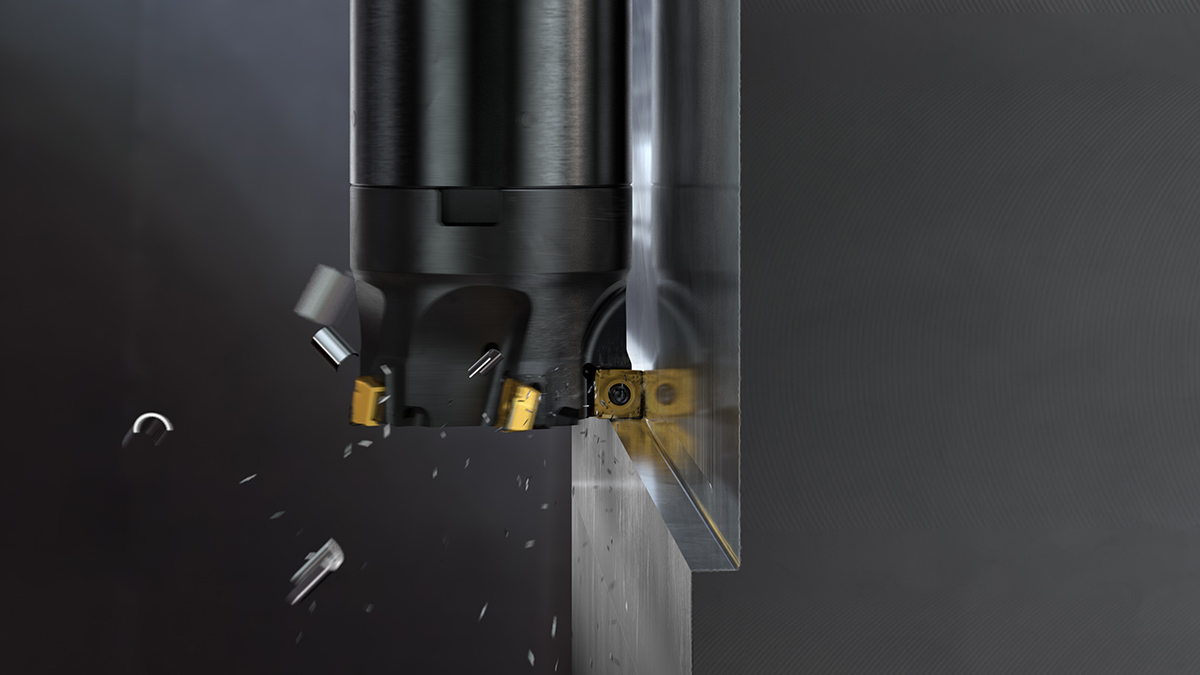Tooling up for next generation aerospace
New materials and digital manufacturing enable lighter, safer, more fuel-efficient aircraft, with Sandvik as a key contributor.

Advanced tooling solutions are critical for success in the aerospace industry and Sandvik provides tools and processes for the manufacturing of components for aircraft structural parts and engines. “Working shoulder to shoulder with aerospace companies at our dedicated aerospace engineering competence centers, Sandvik is pioneering advanced cutting tools, modular tooling solutions and software that save time and reduce inventory,” says Nicklas Bylund, Director Engineering Projects at Sandvik Coromant in Durham, USA.
“Quality and safety are the primary objectives in aircraft manufacturing”, adds Jérôme Cavin, Global Manager Engineering Projects Aerospace at Sandvik Coromant, based in Chongqing, China. “Designers never compromise on these aspects for the sake of efficiency or cost savings. They can create very complex designs and try new materials as long as they are safe and can save weight and/or improve fuel efficiency.”
Innovations lead the way for spacecraft
Aerospace components are often made of heat-resistant materials that are challenging to machine, such as titanium, superalloys and composite, with lower cutting speeds and shorter tool life. Advanced composites like carbon fiber reinforced plastics (CFRP) are becoming more prevalent in aerospace due to their high strength-to-weight ratio, and some 50 percent of modern aircraft structures, like the Airbus A350 and Boeing 787 Dreamliner, are made from CFRPs.
Given the complexity in component design and the demanding specifications, choosing the most suitable tools and machining method is vital. According to Bylund, this is where CAM tools from Sandvik can make a major difference. “Our CAM suite optimizes manufacturing yields and shortens lead times, while our tools are adapted to the extremely tough requirements on components used in aircraft manufacturing.”
Cavin says: “The CAM expertise of Sandvik supporting our optimized processes is our number one differentiator.”
Programs for process development
In addition, Sandvik offers programs for process development and training to embed the routines for safe and cost-efficient manufacturing to deliver quality results for every component. Rigorous safety standards, expensive materials and tight tolerance levels require tools that do their job.
Sandvik Silent Tools™, for example, is a family of tool holders for turning, milling, boring and drilling that is favored by aircraft manufacturers. The tool holders are designed to minimize vibrations through a dampener inside the tool body, which is ideal for sensitive aircraft parts where the slightest vibration may jeopardize component quality. “The majority of customers use these tools for long overhangs; however, even with shorter overhangs, large productivity increases, and surface quality improvements are to be gained,” says Bylund.
“The customers plan ahead and develop the components they need for overall efficiency and safety, then it’s up to us find a way to manufacture it. This makes our job so interesting, challenging and fun,” says Cavin.
The results are machine tools that are more efficient, use less power, and are able to machine more complex components, using dynamic turning or milling.
If aircraft manufacturing is an application with extremely tough demands on materials and tools, this is even truer for spacecraft, where Sandvik innovations also lead the way.
Sandvik has developed metal powders uniquely tailored to meet the extreme needs in space. The material used for combustion chambers in rocket engines, for example, must be able to withstand combustion gas at 3,000 K (2,727°C/ 4,941°F). It is therefore equipped with hundreds of liquid-nitrogen cooling channels with the gas-atomized, copper-based alloy Osprey® C18150 (CuCrZr).
Global supply chains
The aerospace industry relies on global supply chains with a network of subcontractors and production facilities. Being a global company with a presence in all major markets, Sandvik has a strong position in times when tariffs and other impediments to trade increasingly favor domestic sourcing. “Sandvik is able to smoothly coordinate deliveries and projects across different regions and we have a competitive advantage when customers shift production to other countries. Our global network, with engineering skills and hardware across different locations, supports customers,” notes Bylund.
Being a supplier to the aerospace industry requires top-notch solutions, but those who can deliver are in it for the long ride. The backlog of orders at aircraft manufacturers currently equal more than ten years’ worth of production. “Years of underproduction, an aging global aircraft fleet, and steady growth in global travel are driving strong demand across all segments of aviation services,” according to investment bank Harris Williams.
Both Boeing and Airbus landed among their largest orders ever in 2023; nearly 500 jets in total. The traditional duopoly, however, is being challenged by new players. “We see really important back orders of some 1,200 aircraft from the new Chinese player COMAC,” says Cavin.
“It feels great being a passenger on an airplane we have helped manufacture!”